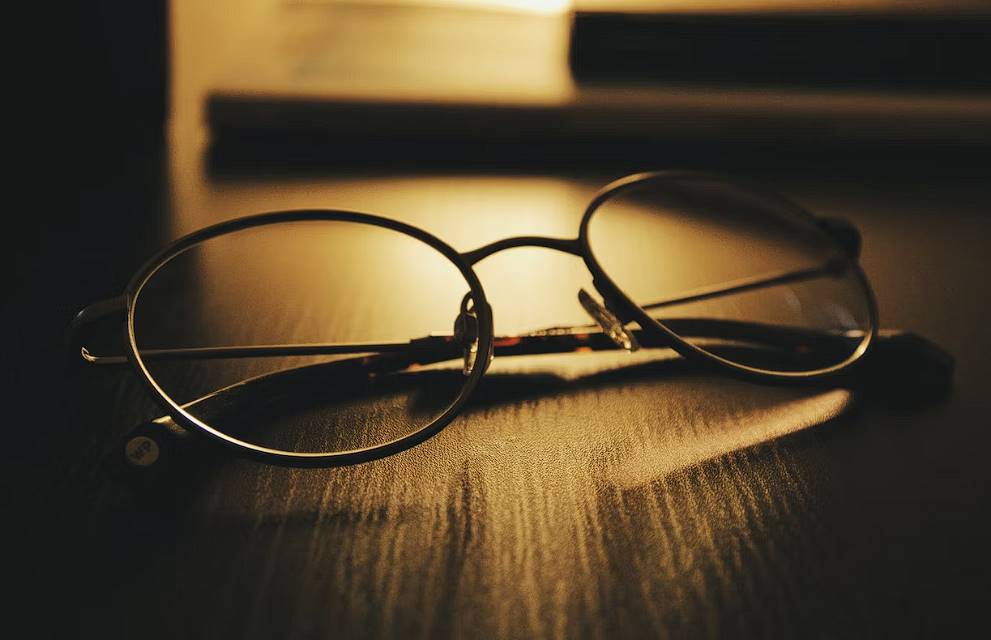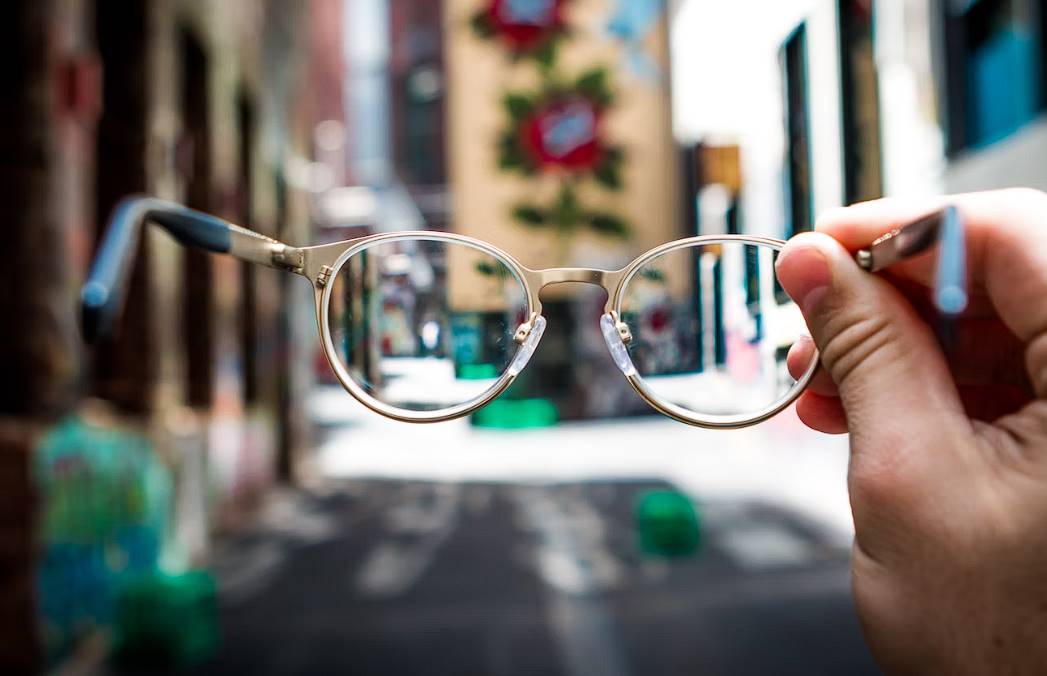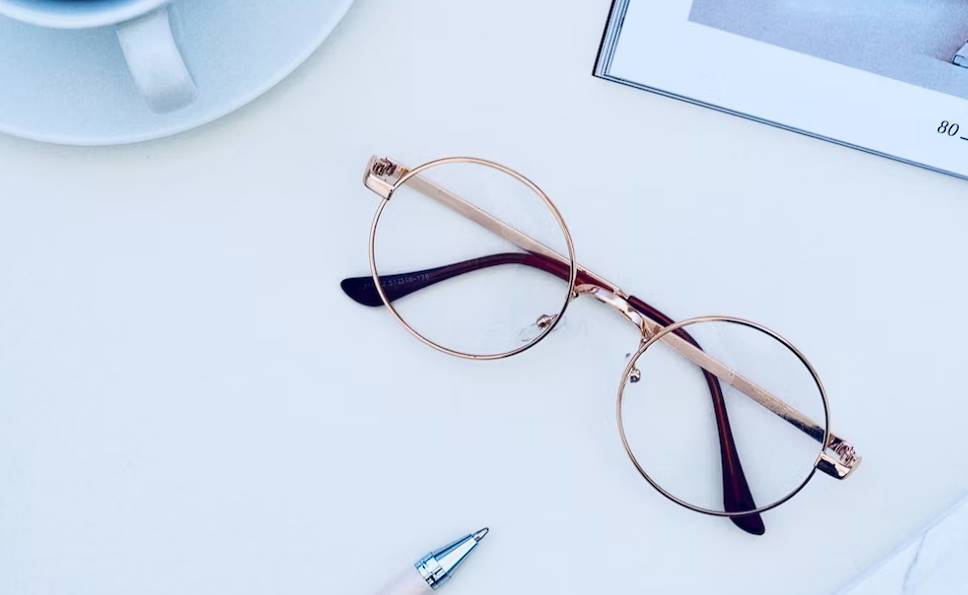Eyeglasses are an essential tool for correcting vision and allowing people to see clearly and comfortably. However, there are several lens options in eyewear, so finding the right pair of glasses for you might be a bit of a challenge. Normal lenses and progressive lenses are the two most prevalent types of eyewear. Choosing the best eyewear for your visual needs requires careful consideration, so it's important to know the distinctions between these two lens types. In this introductory piece, we'll take a closer look at the differences between progressive lenses and regular lenses, discussing the advantages and disadvantages of each. Understanding these differences will equip you to confidently choose the lenses that will best serve your visual demands and lifestyle.
Progressive Lenses
Progressive lenses, often called multifocal lenses, are eyeglass lenses that are engineered to smoothly transition between multiple focus lengths. Progressive lenses gradually include several prescriptions, as opposed to the one prescription used in standard single vision lenses.
Progressive lenses are distinguished by their design, which features an incremental power shift from the lens's upper to lower portions. Typically, the upper part of the lens corrects for distant vision, while the lower part is made for near vision. Intermediate vision correction, such as that required for using a computer or reading a book, is possible thanks to a smooth progression of power between these two zones.
The human eye can concentrate smoothly on both faraway and up-close things, and this is what the progressive lens design attempts to replicate. This gradual change in power within a single lens makes it unnecessary for people with presbyopia or age-related vision impairments to switch between multiple pairs of glasses for different distances, which is both convenient and comfortable.
The corridor or intermediate zone of progressive lenses is an important transitional area between the distant and near vision zones. Some lenses may have a narrower intermediate zone, reducing visibility at those distances. However, recent developments in lens technology have allowed for the creation of broader corridor designs, which provide a more generous intermediate zone and enhanced visual comfort.
Precision in measurement and tailoring to each person's specific visual needs are essential to the success of the intricate design of progressive lenses. To achieve the best possible performance and clarity of vision, optometrists and eye care experts take into account the individual's prescription, frame size, and intended visual tasks.
Normal Lenses
The standard for vision correction has always been the single vision lens. These lenses are intended to provide only one type of correction, for either near or far vision. Single vision lenses, in contrast to progressive lenses, are uniform in prescription strength across the entire lens.
Single vision lenses are designed to improve seeing clearly at a single distance. Most commonly, they are employed to remedy refractive defects such myopia, hyperopia, and astigmatism. Single vision lenses can be recommended for either near vision activities like reading or computer work, or far vision activities like driving or watching television, depending on the individual's prescription.
Simple in construction, single vision lenses have the same prescription strength throughout the entire lens. They work best for people whose vision loss is limited to one particular range of depth perception. Single vision lenses help people see clearly and comfortably by correcting their vision precisely for that distance.
Glass and various polymers are two examples of suitable materials for these lenses; extra coatings, such as anti-reflective ones, can be applied to reduce glare and enhance clarity. They come in a variety of depths to suit different needs, and they can be placed in numerous frames.
In general, single vision lenses are designed to help people whose eyes only need to be adjusted for one distance. These lenses are an effective method to boost both near and far vision, allowing you to see more clearly and do more with your eyes.
Field of Vision: Progressive Lenses
Distance Vision
Distance vision is optimised in the upper portion of progressive lenses. Objects in the far distance, such road signs, landscapes, or television screens, can be seen clearly within this zone. Distance vision has the largest field of view and provides the sharpest visuals at long range. Individuals may see clearly without squinting or tilting their head when gazing straight ahead through the upper half of the lens.
Intermediate Vision
The centre of the lens is where the progressive lenses' intermediate zone is located. It focuses sharply from within an arm's length to a few feet away, making it ideal for viewing items at these distances. Activities like computer work, reading music notation, and other close-up pursuits can be carried out comfortably in this area. The breadth of the intermediate zone varies from lens to lens, but it often provides a wide enough field of vision for intermediate-distance tasks.
Near Vision
Progressive lenses are designed specifically for close vision, with the lower portion. Reading material, smartphones, and the intricate details of crafts and artwork can all benefit from the sharp focus afforded by this zone. Magnification provided by the near vision zone makes it possible for people to work comfortably on jobs that are close up. The near vision zone is accessed by gazing through the lower half of the lens, and some people may need to slightly lean their head downward to do this.
It is important to note that the field of view is not constant over the entire lens surface in progressive lenses. There is some peripheral distortion or blurriness around each of these three zones, and the transition between them is slow. It may take some getting used to, but this peripheral distortion is a frequent side effect of progressive lenses. By adjusting your head and eye placement, you may make the most of the progressive lenses' various viewing zones and expand your field of vision. To make sure your lenses give you the best possible vision for your needs, it's best to work closely with an eye doctor.
Field of Vision: Normal Lenses
Distance Vision
Distance vision correction using normal lenses is a possibility. These lenses' primary purpose is to sharpen one's eyesight for distant objects like road signs, landscapes, and television displays. The entire lens of a pair of glasses designed for distance vision has the same prescription strength, allowing for clear vision at any distance. This class provides an expansive view of faraway objects and eliminates the need for focusing adjustments.
Near Vision
Near-vision normal lenses are another option. Reading material, smartphones, and the intricate details of crafts and artwork are just some of the close-up subjects that benefit from these lenses' clarity and focus. When you put on your regular reading glasses, the entire lens has the corrective power you need to see up close. This class guarantees that people won't have to strain their eyes while reading or doing other close-up activities.
Keep in mind that most people only get one prescription for their glasses, either for distant or near vision, and not both. It is possible that people who need glasses for both near and far vision will need to carry around multiple pairs of regular glasses at all times.
Within the range of focus that regular lenses are designed for, the visual field is constant. This means there is no gradual transition between prescription strengths, as there is with progressive lenses, and the lens provides constant clarity throughout. Normal lenses provide sharp vision within the specified distance, but focusing on items further away may require the wearer to readjust his or her glasses or head posture.
Normal lenses can have the correct prescription power and lens design for optimal field of vision within the desired distance if one works closely with an eye care specialist. Clear, pleasant eyesight that suits one's own requirements is made possible in this way.
Who Should Wear Progressive Glasses?
People with presbyopia can benefit from wearing progressive glasses, commonly known as progressive lenses or multifocal lenses. Age-related hardening of the lens in the eye causes presbyopia, a disease that makes it difficult to focus on near objects. Symptoms usually first appear around age 40 and worsen with time. The following are some examples of why it might be useful for someone to use progressive lenses:
Presbyopia
Progressive glasses are helpful for people with presbyopia who need correction for both close and far distances. It is not necessary to switch between separate pairs of glasses when using these lenses because of the smooth transition between focal distances.
Age-related vision changes
Vision correction for both close and far objects may become necessary as we age. If you're experiencing changes in your eyesight as you get older, progressive glasses can help you see clearly at all distances with only one pair of glasses.
Reading and close-up work
Progressive lenses in glasses can help if you perform a lot of close-up work like reading, using a computer, or crafting intricate items. Clear and comfortable focus on near objects is provided by the near vision zone in progressive lenses, minimising eye strain and improving visual clarity.
Multi-tasking
People who need to see things at varying distances throughout the day can benefit greatly from using progressive lenses in their glasses. With progressive lenses, you won't have to worry about switching between reading glasses and computer glasses whenever you need to switch between near and far vision for whatever reason.
Convenience and aesthetics
One pair of progressive glasses can serve as a solution for several different types of vision impairment. They make it unnecessary to have multiple pairs of glasses, one for each viewing distance. Because there are no distinct lines between the various zones of vision, progressive glasses are also more aesthetically pleasant than bifocals or trifocals.
Wearing progressive lenses requires careful consideration and should only be done after consulting an eye doctor. They'll examine your eyes, your prescription, and your way of living to figure out if progressive lenses are the best choice for you. To get the most out of your glasses, in terms of comfort and vision clarity, it's important to have them professionally fitted and adjusted.
Tips for Wearing Progressive Lenses
- Get in the habit of directing your entire head in the direction you want to gaze. Flicking your eyes back and forth might induce rapid field switching, which can impede your vision.
- Try not to glance down at your feet or the ground as you walk. Looking at your feet can cause your eyesight to become unduly magnified because the bottoms of your lenses are normally designed for close-up jobs.
- Put on your progressives as often as possible so that you can get used to them. Keep an eye out for any signs of discomfort or blurred vision, and take your time building up to full-day wear if you need to. (Never wear a pair of glasses that consistently bothers you.)
- Always listen to the recommendations of your eye doctor. Let them know if you're having problems adjusting to your progressives so they can change your prescription, check the fit of your glasses, or provide you with further instructions.
Conclusion
Progressive lenses, or multifocal lenses, are specially designed for eyeglasses. Their design is unique in that there is a gradual change in magnification from the top to the bottom of the lens. People with presbyopia or age-related visual problems no longer need to juggle many pairs of glasses for different distances because of this steady adjustment in power. The intermediate zone, also known as the corridor, is a crucial part of progressive lenses since it connects the far and near vision zones. As lens technology has advanced, wider corridor designs have been crafted to provide a roomier intermediate zone and higher levels of visual comfort.
Progressive lenses are customised for each individual based on their prescription, frame size, and visual needs. Whether you need them for close or far vision, single vision lenses are optimised for clear vision at a specific distance. They're adaptable to different frame depths and widths. Additional coatings can be added to lessen reflection and improve visibility. Progressive lenses are eyeglass lenses that improve one's ability to see both up close and far away.
Wearing progressive lenses should only be done after thorough deliberation and advice from an eye doctor. You should have your spectacles fitted and adjusted by a professional if you want to get the most out of them. To get the most out of your progressive lenses, you should always have them on, point your head in the direction you wish to look, and avoid looking down at your feet. The advice of your eye specialist should always be followed.
Content Summary
- Eyeglasses are an essential tool for correcting vision and allowing people to see clearly and comfortably.
- However, there are several lens options in eyewear, so finding the right pair of glasses for you might be a bit of a challenge.
- Normal lenses and progressive lenses are the two most prevalent types of eyewear.
- Choosing the best eyewear for your visual needs requires careful consideration, so it's important to know the distinctions between these two lens types.
- Understanding these differences will equip you to confidently choose the lenses that will best serve your visual demands and lifestyle.
- The corridor or intermediate zone of progressive lenses is an important transitional area between the distant and near vision zones.
- Precision in measurement and tailoring to each person's specific visual needs are essential to the success of the intricate design of progressive lenses.
- To achieve the best possible performance and clarity of vision, optometrists and eye care experts take into account the individual's prescription, frame size, and intended visual tasks.
- The standard for vision correction has always been the single vision lens.
- These lenses are intended to provide only one type of correction, for either near or far vision.
- Single vision lenses, in contrast to progressive lenses, are uniform in prescription strength across the entire lens.
- Single vision lenses are designed to improve seeing clearly at a single distance.
- Simple in construction, single vision lenses have the same prescription strength throughout the entire lens.
- They work best for people whose vision loss is limited to one particular range of depth perception.
- In general, single vision lenses are designed to help people whose eyes only need to be adjusted for one distance.
- These lenses are an effective method to boost both near and far vision, allowing you to see more clearly and do more with your eyes.
- Distance vision is optimised in the upper portion of progressive lenses.
- Distance vision has the largest field of view and provides the sharpest visuals at long range.
- The centre of the lens is where the progressive lenses' intermediate zone is located.
- The breadth of the intermediate zone varies from lens to lens, but it often provides a wide enough field of vision for intermediate-distance tasks.
- Progressive lenses are designed specifically for close vision, with the lower portion.
- Magnification provided by the near vision zone makes it possible for people to work comfortably on jobs that are close up.
- It is important to note that the field of view is not constant over the entire lens surface in progressive lenses.
- By adjusting your head and eye placement, you may make the most of the progressive lenses' various viewing zones and expand your field of vision.
- To make sure your lenses give you the best possible vision for your needs, it's best to work closely with an eye doctor.
- Distance vision correction using normal lenses is a possibility.
- The entire lens of a pair of glasses designed for distance vision has the same prescription strength, allowing for clear vision at any distance.
- When you put on your regular reading glasses, the entire lens has the corrective power you need to see up close.
- Within the range of focus that regular lenses are designed for, the visual field is constant.
- Normal lenses can have the correct prescription power and lens design for optimal field of vision within the desired distance if one works closely with an eye care specialist.
- People with presbyopia can benefit from wearing progressive glasses, commonly known as progressive lenses or multifocal lenses.
- Age-related hardening of the lens in the eye causes presbyopia, a disease that makes it difficult to focus on near objects.
- Progressive glasses are helpful for people with presbyopia who need correction for both close and far distances.
- If you're experiencing changes in your eyesight as you get older, progressive glasses can help you see clearly at all distances with only one pair of glasses.
- Progressive lenses in glasses can help if you perform a lot of close-up work like reading, using a computer, or crafting intricate items.
- One pair of progressive glasses can serve as a solution for several different types of vision impairment.
- Wearing progressive lenses requires careful consideration and should only be done after consulting an eye doctor.
- They'll examine your eyes, your prescription, and your way of living to figure out if progressive lenses are the best choice for you.
- To get the most out of your glasses, in terms of comfort and vision clarity, it's important to have them professionally fitted and adjusted.
- Get in the habit of directing your entire head in the direction you want to gaze.
- Try not to glance down at your feet or the ground as you walk.
- Put on your progressives as often as possible so that you can get used to them.
- Never wear a pair of glasses that consistently bothers you.
- Always listen to the recommendations of your eye doctor.
Frequently Asked Questions
The use of progressive lenses is not without its drawbacks. The price may be higher than that of bifocals or trifocals. Because of the various correction areas, these glasses need a larger frame size. Because of their design, progressive lenses can also make the edges of your field of vision fuzzy.
In comparison to a single-vision lens, progressive lenses allow for clear vision at multiple distances without the need for a second pair of eyewear. You can get by with only one pair of glasses thanks to the versatility of progressive lenses, which serve as both regular lenses and reading glasses.
Progressive lenses offer correction for all distances, including reading, in a single lens, while single-vision lenses only address nearsightedness. Progressive lenses are more expensive than single-vision lenses, but they often end up costing less than buying several pairs of single-vision glasses.
Progressive lenses should be worn continuously. Consistent use will hasten the acclimation process, so wear them even if they're uncomfortable at first.
Progressive lenses allow you to see properly at several distances with only one pair of glasses, even if you need different prescriptions for each. They let you see clearly at a variety of distances without having to switch frames or remove your glasses.










